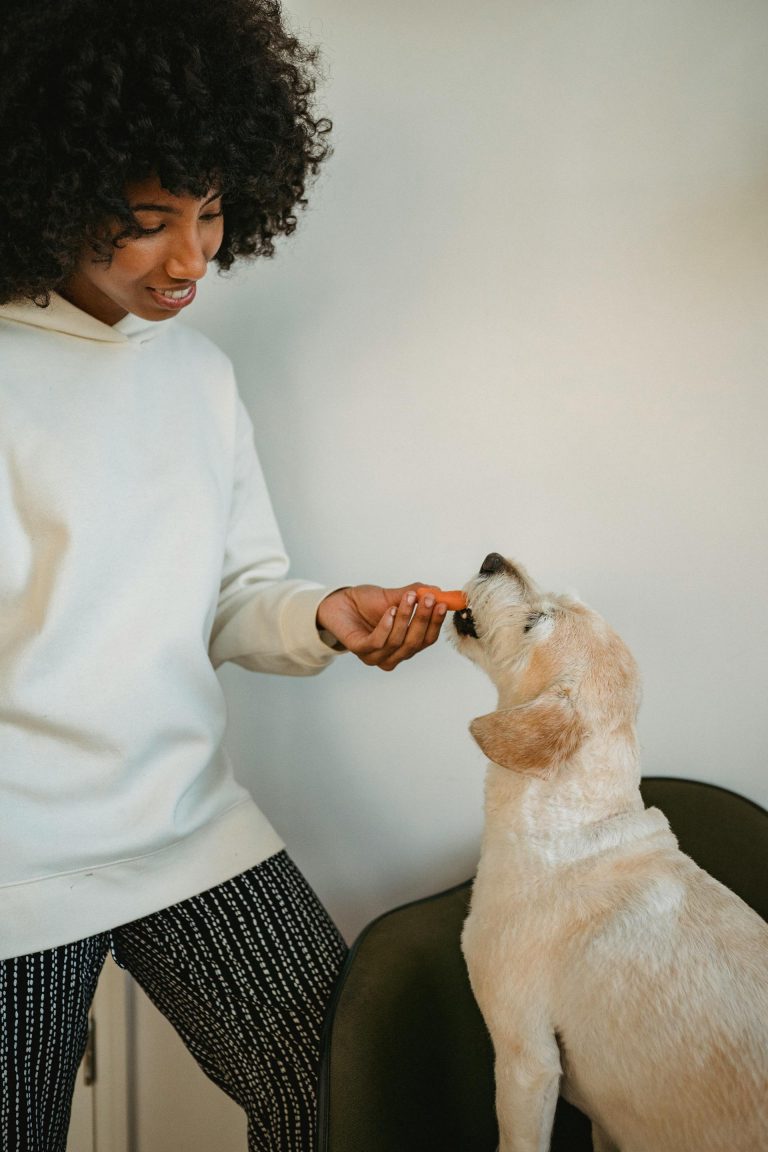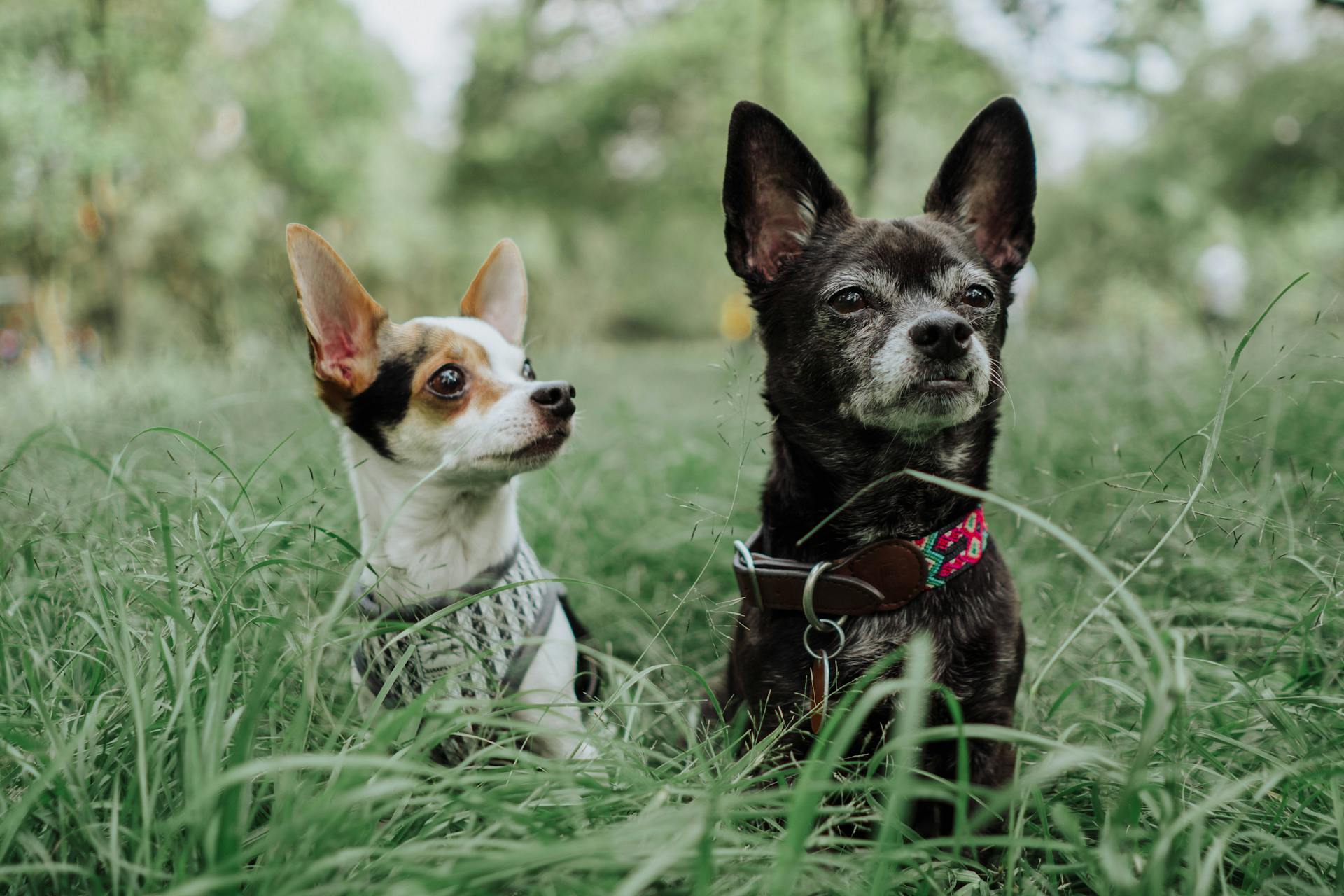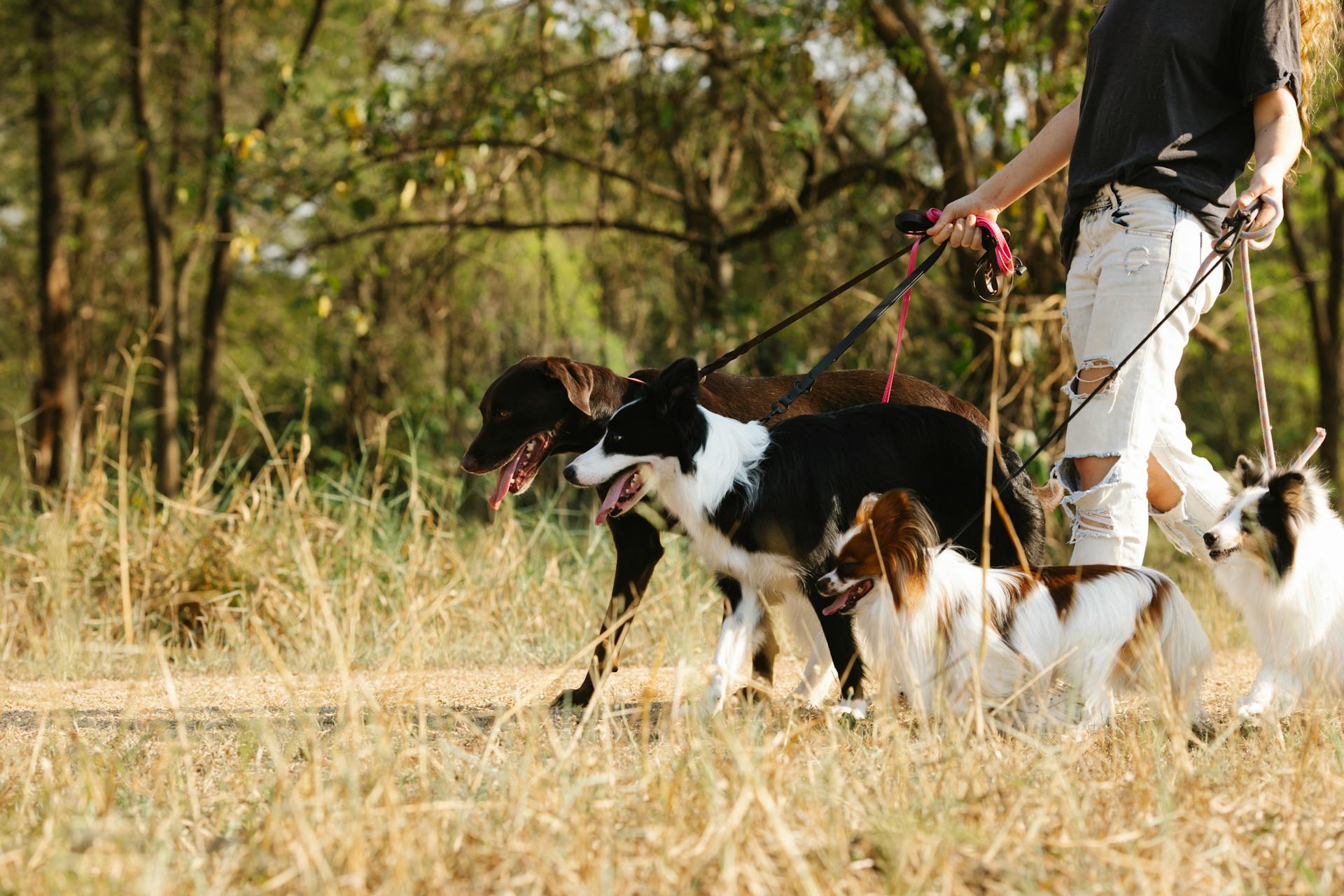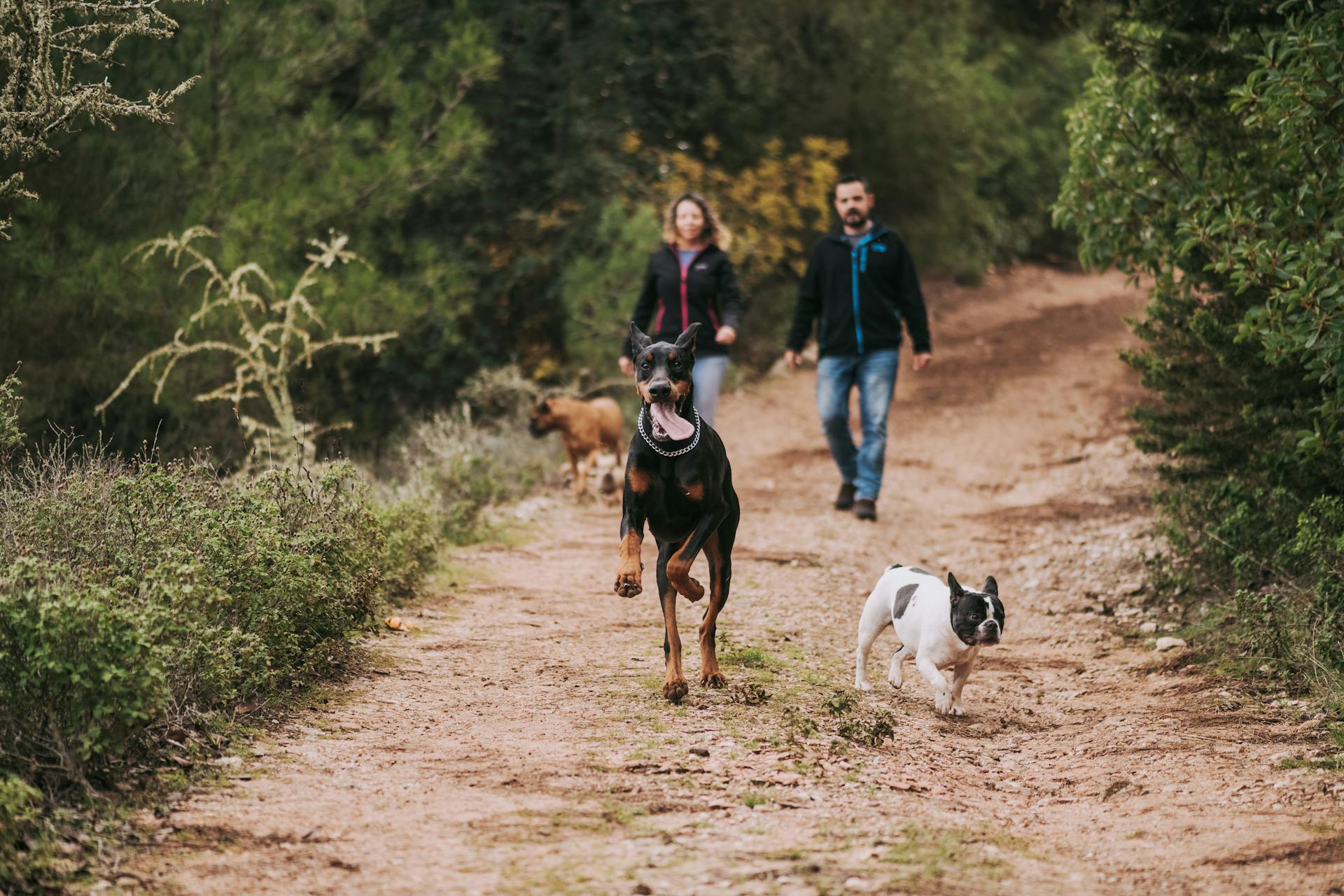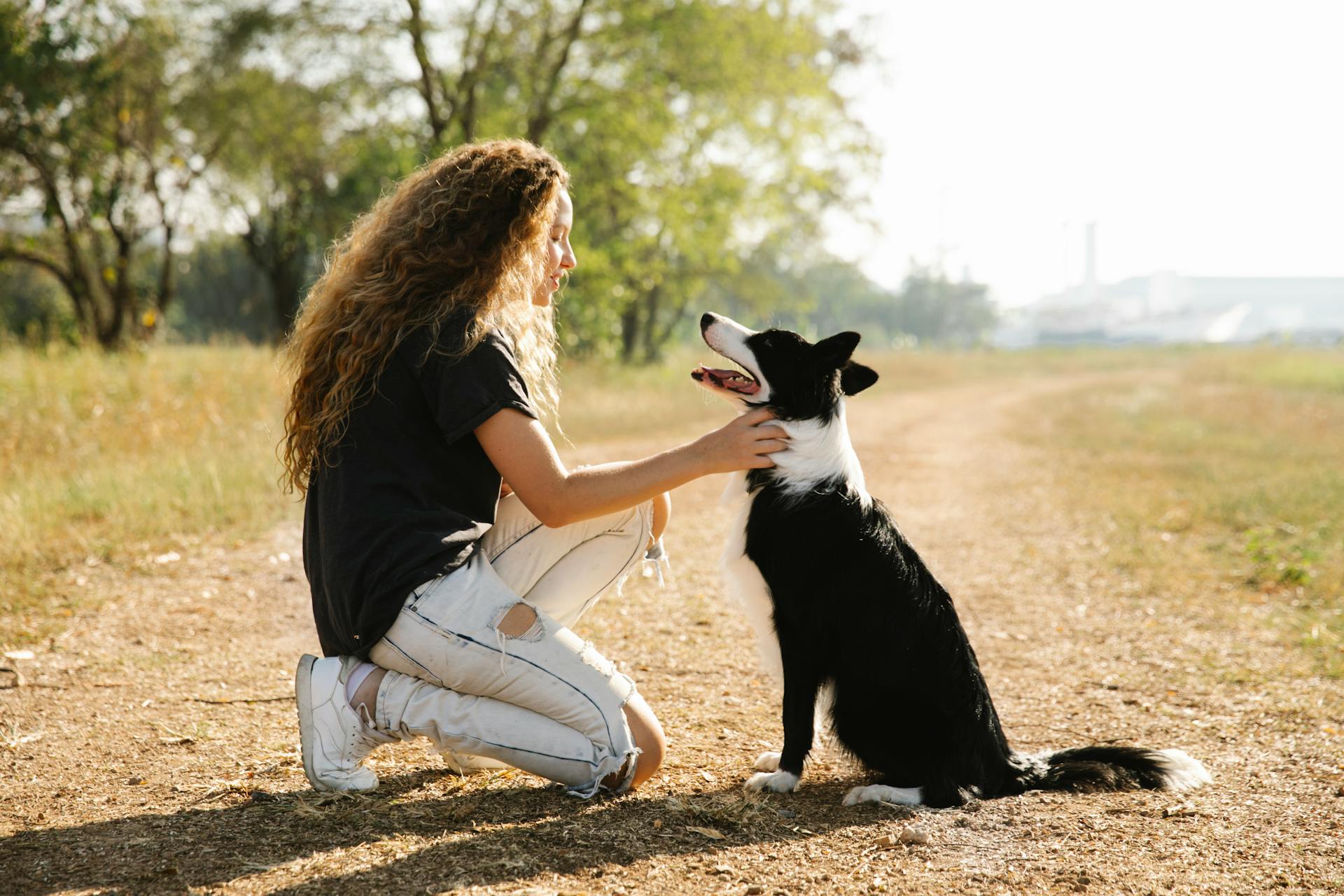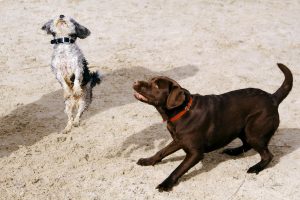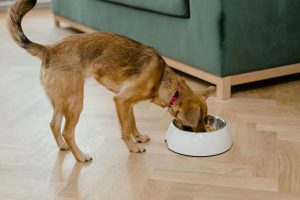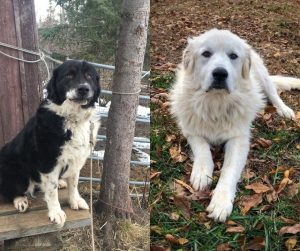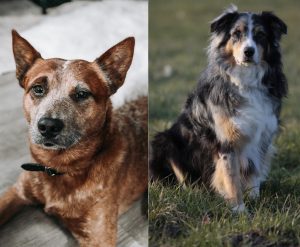Whenever we talk about exercise needs for dogs, we often talk about physical exercise. But mental stimulation is an important part of the equation. It’s crucial for your dog’s emotional wellbeing.
We often say dogs are smart, but they are more than just smart. Dogs are far more intuitive than we give them credit for When their brains are not challenged, dogs seek out fun and activities on their own. As a responsible dog owner. You should provide plenty of mental stimulation for your dog.
You do want a happy dog, not a bored dog, right?
Here’s how to provide mental stimulation for dogs the right way.
Why Does Your Dog Need Mental Stimulation?
Providing your dog with enough mental exercise benefits both of you. . because a dog who doesn’t get work for his brain is an unhappy puppy. Before we get to some of the ways you can provide enrichment activities for your dog, let’s talk about the benefits of dog mental stimulation.
- Alleviates boredom and keeps your puppy occupied
- Reduces depression and anxiety in dogs,
- Gives working breeds a purpose
- Reduces hyperactivity and zoomies in dogs who are alone at home and have nothing to do
- Provides a workout for the brain
- Helps calm your dog
- Lowers aggressive tendencies
- Helps eliminate destructive behavior, especially in dogs who love chewing and digging
- Helps reduce barking
Mental Stimulation Activities
Here are a few ways to provide your dog with the mental stimulation he needs. Two of the best ways to enrich your dog’s life are sniff walks and brain games.
Sniff Walks
When done properly, sniffing walks can be an amazing way to provide mental stimulation for your puppy.
Some other names you might find for this activity include sniffaris, scent walks, dog-led walking, and decompression walks. But the general idea is the same … to allow your dog to take the lead and sniff around as much as he likes.
Here’s the logic behind it. Dogs use their nose to explore their surroundings through scent. The part of your dog’s brain that analyzes scents is 40 times bigger than ours. That means dogs can process a lot more smells.
When they smell something, dogs get information about new places and experiences. But it is also stress-relieving. Dogs can be overwhelmed and overstimulated in our world. That is especially true for dogs living in large cities. Just think of all the distractions like traffic sounds, crowded sidewalks, and everything in between.
Sniffing allows dogs to decompress, get rid of some anxiety, and feel more in line with their instinct and nature.
How Not To Do Sniff Walks
The only problem arises when you overdo it. Not every walk should be a sniff walk. That can teach your dog to stop and sniff at every 5 to 7 feet. Here are three reasons you shouldn’tt overdo sniff walks:
- They do not provide enough physical activity. Adult canines need cardiovascular exercise that will keep their joints and heart healthy. A slow pace doesn’tt achieve that.
- Some dogs might pick up things from the ground and eat while sniffing. That can sometimes result in an emergency visit to the vet!
- It teaches your dog bad habits and bad leash manners like pulling on the leash, darting back and forth, and that smells are interesting and more important than you, the pet
How To Do A Sniff Walk Properly
A sniff walk is an amazing experience for your dog, provided you do it properly.?
That means a scheduled walk that you use as a reward for good behavior or manners. Make the sniff walk a reward for your dog.
So you shouldn’t go for a sniff walk every day. I suggest doing a sniff walk once per week for most breeds.
Combine Sniff And Structured Walks
A structure is a way to add activities to your regular dog walking routine. And if you want to combine it with a sniffing walk, you can easily do it.
For example, make a sniff walk a reward for proper leash manners.
First walk your dog on the leash, or in a heel position, and then allow him t to sniff for five to ten minutes. During the sniff period, your dog takes the lead and can navigate the walk. But once the set time is over, things go back to normal and you control where you go.
After the sniff walk, I recommend a little bit of impulse control dog training. Basically, sit and enjoy some quiet time. Do nothing. It is one of the hardest things for a puppy or young dog to do. But if you reward calm behavior, your dog will get there.
This way, a sniff walk teaches your dog good manners.
Brain Games You Can Play at Home
A sniff walk is only one way to provide some mental stimulation for your dog. There are countless ways to provide enrichment for your dog even at home. Playing some brain games at home is crucial for your dog’s wellbeing.
Brain games can help reduce the chances of cognitive dysfunction as your dog gets older. It is the same with humans … the more you exercise your brain, the lower the risk for conditions like dementia or Alzheimer’s.
With that in mind, here are some brain games you can play at home. And unlike puzzle toys, these games are free.
Target Training
This simple brain game improves your dog’s focus. The premise is simple. Teach your dog to touch a target. The target can be anything you want … your hand, a stick with a tennis ball. Or any other object. If you have seen some cute videos of dogs doing a a “boop”, that is target training.
All you have to do is hold something in front of your dog. Ask your pet to touch it, and reward when the dog touches the item. Dogs are naturally curious. If you stick something in front of their nose, they will at least sniff it. In the beginning, reward sniffing, and gradually move to rewarding touching.
With target training, you can move to more advanced behaviors like your dog ringing a bell to go outside, pressing a button, and so on.
Hide And Seek
Arguably one of the best brain games you can play to improve the bond between you and your dog. Hide and seek teaches your dog so many good behaviors, like looking for you and coming to you … and he gets rewarded for finding you.
You can play the interactive game at home, or go outside if you have somewhere safe to play it.. It is a natural way of improving your dog’s recall.
And yes, the premise is that simple. You hide, and your dog looks for you. Once your puppy finds you, reward him with some excitement and treats.
Snuffle Mat
You can buy snuffle mats, or make one yourself. A snuffle mat is an excellent way to play into your dog’s natural instinct of sniffing. and providing some mental enrichment and keep your dog occupied for a while. This enrichment toy encourages your dog to sniff and search for hidden treats.
DIY Snuffle Mat
There are many different ways to make a DIY snuffle mat at home.
I do it with an old blanket or towel. Just make sure to remove anything like buttons or other swallowing hazards. Hide the treats in an old blanket, and then scrunch the blanket a little bit. Then, encourage your dog to investigate and find hidden treasures. As your dog gets better at the interactive game, raise the difficulty by folding or twisting the blanket so your dog has to work harder to find the treats. For a more advanced game, twist the blanket or towel and then tie it in a loose knot.
Beginner’s Dog Parkour
You might think that agility courses and dog parkour are things you do only outside. But you can do some beginner exercises at home. And learning new things is mentally stimulating and rewarding for your dog.
At home, you can try exercises like going under, or jumping over obstacles, putting feet on an object, going around an object, and more.
Learn New Tricks
Teaching your dog a new trick or cue is an excellent mental stimulation exercise. It’s even more helpful for fearful or anxious dogs. Start with basic tricks, and make sure your dog wins most of the time. Winning and getting rewarded for it will boost your dog’s confidence.
There are countless tricks you can learn, from some basic ones like sit, stay, shake, paw, and so on, to more complicated ones like play dead or roll over
Scatter Feeding
Another brain game you can play is scatter feeding. Just scatter your dog’s treats around the home or the yard and let your puppy find them.
Work for Food
Working for food is a great game. Even if you have a toy breed, I believe that dogs shouldn’t alwaysget free food in a bowl. If you have a working breed, it is even more important you cater to your dog’s instinctive behaviors. Working for food or treats is a great activity to provide mental stimulation for dogs.
What you do is use your dog’s food as a reward for learning new tricks, repeating old tricks, or just encouraging calm behavior. For example, prepare your dog’s bowl, but ask your dog to wait for 15-30seconds before you put it down. This will teach your dog to wait patiently and calmly for his meal.
As you can see, there are many creative ways to provide your dog with mental exercise. These are just a few to get you started.

